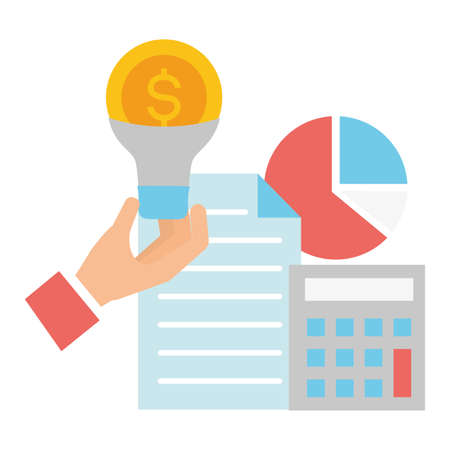1. Understand and Claim All Eligible Tax Credits
One of the smartest ways to boost your tax refund in the United States is by making sure you claim all the tax credits you qualify for. Many people miss out on valuable credits simply because they’re unaware they exist or don’t realize they’re eligible. Here’s a closer look at some of the most popular tax credits you should review before filing your return:
Popular Tax Credits to Know
| Credit Name | Who Qualifies? | Potential Benefit |
|---|---|---|
| Earned Income Tax Credit (EITC) | Low-to-moderate income workers and families, with or without children | Up to $7,430 for tax year 2023, depending on income and family size |
| Child Tax Credit (CTC) | Families with dependent children under age 17 | Up to $2,000 per qualifying child; partially refundable |
| American Opportunity Credit (AOC) | College students or parents paying qualified education expenses for a student in their first four years of higher education | Up to $2,500 per student; 40% may be refundable |
| Lifelong Learning Credit (LLC) | Anyone paying for post-secondary education, including graduate courses or job skill training | Up to $2,000 per tax return (not refundable) |
| Savers Credit | Low-to-moderate income earners contributing to retirement accounts like IRA or 401(k) | Up to $1,000 ($2,000 if married filing jointly) |
Tips for Claiming Credits:
- Double-check eligibility: Each credit has specific requirements. Make sure you read the IRS guidelines or use reputable tax software to check your eligibility.
- Gather necessary documents: You’ll need Social Security numbers for dependents, proof of income, receipts for tuition or childcare expenses, and records of retirement contributions.
- Don’t leave money on the table: Even if you don’t owe any taxes, some credits are refundable and could mean extra cash back from the IRS.
- If unsure, ask for help: Consider working with a qualified tax preparer or using free resources like IRS Free File or Volunteer Income Tax Assistance (VITA).
By reviewing these credits carefully and making sure you claim every one you qualify for, you can significantly increase your refund and make tax season a little more rewarding.
2. Maximize Tax Deductions
One of the smartest ways to increase your tax refund in the United States is by making the most of your available tax deductions. Understanding how deductions work—and knowing which ones you qualify for—can make a significant difference on your tax return.
Standard vs. Itemized Deductions
First, it’s important to decide whether to take the standard deduction or itemize your deductions. The IRS allows you to choose whichever method gives you a bigger deduction amount. Here’s a simple comparison:
| Deduction Type | What It Means | Who Should Use It? |
|---|---|---|
| Standard Deduction | A flat-dollar amount set by the IRS, based on your filing status | If your total itemizable expenses are less than this amount |
| Itemized Deduction | Add up specific deductible expenses (like mortgage interest, taxes paid, donations, and medical costs) | If your total eligible expenses are more than the standard deduction |
Common Itemized Deductions You Can Claim
If you decide to itemize, make sure you’re including all possible deductions. Here are some key areas to check:
- Mortgage Interest: If you own a home and pay interest on your mortgage, you can usually deduct this expense.
- State and Local Taxes (SALT): You can deduct up to $10,000 ($5,000 if married filing separately) in state and local property, income, or sales taxes.
- Charitable Contributions: Donations to qualified charities are deductible if you have receipts or bank records.
- Medical Expenses: Medical costs that exceed 7.5% of your adjusted gross income may be deductible. Be sure to keep records of out-of-pocket healthcare expenses.
Quick Tip: Keep Good Records!
The IRS may ask for proof of any deductions you claim. Save receipts, bank statements, and other documentation throughout the year so you’re ready when it’s time to file.
Deductions at a Glance
| Deduction Category | Examples | Documentation Needed |
|---|---|---|
| Mortgage Interest | Interest paid on home loans | Lender’s Form 1098 statement |
| SALT Taxes | Property tax bill, state income tax paid | Bills or payment confirmations |
| Charitable Gifts | Cash donations, donated goods | Receipts from organizations |
| Medical Expenses | Doctor bills, prescriptions, dental care | Bills and payment records |
Taking advantage of these deductions helps lower your taxable income and could result in a larger tax refund. Always review current IRS rules each year as deduction limits or eligibility can change.

3. Optimize Retirement Contributions
One of the smartest ways to boost your tax refund in the United States is by making contributions to tax-advantaged retirement accounts, such as 401(k)s and IRAs. When you put money into these accounts, you not only save for your future but also lower your taxable income today. This can help you qualify for a bigger refund or reduce the amount you owe.
How Retirement Contributions Affect Your Taxes
Contributions to traditional 401(k) plans and traditional IRAs are made with pre-tax dollars. This means the amount you contribute is subtracted from your taxable income for the year. For example, if you earn $50,000 and contribute $5,000 to your 401(k), youll only be taxed on $45,000.
Types of Tax-Advantaged Accounts
| Account Type | Contribution Limit (2024) | Tax Benefit |
|---|---|---|
| 401(k) | $23,000 ($30,500 if age 50+) | Reduces taxable income |
| Traditional IRA | $7,000 ($8,000 if age 50+) | May reduce taxable income* |
*Note: Deductibility of IRA contributions may vary depending on your income and whether you or your spouse is covered by a retirement plan at work.
Why This Strategy Works
- You pay less in taxes now because your taxable income is lower.
- Your investments grow tax-deferred until you withdraw them in retirement.
- If your employer offers a matching contribution to your 401(k), that’s free money added to your retirement savings!
Quick Tips for Maximizing Benefits
- Try to contribute enough to your 401(k) to get the full employer match.
- If eligible, make IRA contributions before the tax filing deadline (usually April 15).
- Review annual contribution limits—they can change each year.
By strategically contributing to retirement accounts, youre not only investing in your future but also giving yourself a better chance at a larger tax refund this year.
4. Take Advantage of Tax-Free Accounts and Reimbursements
One of the smartest ways to maximize your tax refund in the United States is by making the most of tax-free accounts and employer reimbursements. These options allow you to set aside money for important expenses while reducing your taxable income, which can increase your refund when you file your taxes.
Utilize Health Savings Accounts (HSAs)
If you have a high-deductible health plan (HDHP), you may be eligible for a Health Savings Account (HSA). Contributions to an HSA are made with pre-tax dollars, grow tax-free, and withdrawals for qualified medical expenses are also tax-free. This triple tax advantage can help lower your taxable income while saving for future healthcare costs.
| HSA Benefit | Description |
|---|---|
| Pre-tax Contributions | Reduce your taxable income for the year |
| Tax-free Growth | Earnings on investments grow without being taxed |
| Tax-free Withdrawals | No taxes on withdrawals for qualified medical expenses |
Flexible Spending Accounts (FSAs)
An FSA allows you to set aside pre-tax dollars from your paycheck to pay for eligible healthcare or dependent care expenses. Since contributions are made before taxes, you lower your taxable income and potentially boost your refund. Just remember that FSAs usually have a “use it or lose it” rule, so plan your contributions carefully.
Key Differences: HSA vs. FSA
| Feature | HSA | FSA |
|---|---|---|
| Eligibility | Must have HDHP | Offered by employers |
| Funds Roll Over? | Yes, funds carry over year-to-year | No, most funds must be used within the plan year* |
| Contribution Limits (2024) | $4,150 (individual), $8,300 (family) | $3,050 per employee for healthcare FSA |
| Ownership | You own the account even if you change jobs | Employer-owned; may lose access if you leave job |
*Some FSAs allow a small amount to roll over or offer a grace period.
Employer Reimbursements: Save More Tax-Free!
Many employers offer reimbursements or benefits that are not counted as taxable income. These may include:
- Commuter Benefits: Pre-tax deductions for transit passes or parking fees.
- Tuition Assistance: Up to $5,250 per year in employer-provided tuition assistance can be tax-free.
- Health and Wellness Programs: Some reimbursements for gym memberships or wellness activities may qualify as non-taxable benefits.
How These Benefits Impact Your Refund:
The more you contribute to these accounts and take advantage of employer reimbursements, the less taxable income youll report on your return. That means less money owed in taxes—and potentially a larger refund coming your way at tax time!
5. File Accurately and On Time
One of the most important ways to maximize your tax refund in the United States is to make sure you file your taxes accurately and submit them before the IRS deadline. Mistakes or late filings can delay your refund or even trigger penalties. Here’s how you can make this process smoother:
Use Reliable Tax Preparation Tools
Whether you prefer to do your own taxes or get help from a professional, accuracy matters. Popular tax software like TurboTax, H&R Block, and TaxAct are designed to guide you step by step and catch common errors. If your situation is more complex, such as having multiple income sources or investments, consider hiring a certified tax preparer or CPA who knows U.S. tax laws inside out.
Comparison of Filing Methods
| Filing Method | Pros | Cons |
|---|---|---|
| Tax Software | User-friendly, affordable, fast error checks | Might miss unique deductions for complex returns |
| Professional Preparer | Expert advice, personalized guidance, handles complexity | Higher cost, must schedule appointments |
| Paper Filing | No technology needed, traditional method | Slower processing, higher chance of errors, longer refund wait time |
File Electronically with Direct Deposit
E-filing is the fastest and most secure way to send your return to the IRS. When you e-file and select direct deposit for your refund, you can get your money back in as little as three weeks—sometimes even sooner! The IRS processes electronic returns much quicker than paper forms, and direct deposit avoids mailing delays or lost checks.
Tips for a Smooth Tax Filing Experience
- Double-check all Social Security numbers and bank account details.
- Gather all necessary documents before starting (W-2s, 1099s, receipts).
- If using software, answer every question carefully—even small mistakes can cause issues.
- Submit your return as early as possible to avoid last-minute stress.
- If expecting a refund, track its status using the IRS “Where’s My Refund?” tool online.
By filing accurately and on time with reliable tools or professional help—and choosing electronic filing with direct deposit—you’ll put yourself in the best position to receive your maximum refund quickly and without hassle.


